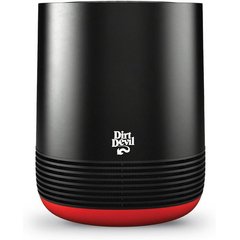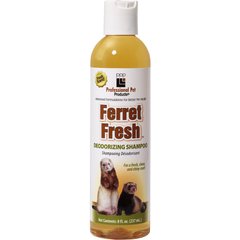Sore Hocks in Rabbits
Ulcerative Pododermatitis in Rabbits
Ulcerative pododermatitis, or bumblefoot, is a bacterial infection of the skin; specifically, the skin of the back feet and hocks -- the part of the back leg that rests on the ground when a rabbit sits. Because of the location and characteristic symptoms, this condition is also referred to as “sore hocks.”
If left untreated, ulcerative pododermatitis can deteriorate to include deep pyoderma -- severe inflammation with pus filled lesions, and deep cellulitis -- severe inflammation of the deep cellular and connective tissue. Exposure to harsh and wet surfaces, or moist surfaces which keep the tissue of the foot pads soft can predispose a rabbit to developing sores on the feet.
Once a deeper infection has set in, many other health conditions can arise in the rabbit. Synovitis (swelling of the joint tissues) often follows, progressing to osteomylitis (infection of the bone marrow), and mosteonecrosis, which results in the loss of blood supply to the bones, eventual bone tissue death and breakdown of the bones.
Symptoms and Types
The signs and symptoms of ulcerative pododermatitis are usually graded from Grade I to Grade V, depending on the severity of the disease.
- Grade I – Rabbits in this stage of the disease have a milder form of the disease and may experience some hair loss and other early symptoms on the bottom surfaces of the rear feet
- Grade II – Rabbits with this mild stage of the disease will experience hair loss on the feet or hocks, and may also experience swelling and redness on the feet and hocks
- Grade III – In this moderate stage of ulcerative pododermatitis the rabbit is more likely to experience broken skin, ulceration and possibly scab formation which may provide an opportunity for infection
- Grade IV – During this severe form of the disease the rabbit is likely to have an abscess, a pocket of infection, and inflammation of the tendons or deeper tissues within the hind limbs of the body
- Grade V – At this stage of the disease the rabbit is likely to experience severe symptoms of ulcerative pododermatitis, including osteomyelitis or bone marrow infection, swelling of the joint tissue (synovitis), and possibly inflammation of the tendons (tendonitis), which can all lead to an abnormal walk, stance and posture
- Other signs and symptoms may include an unwillingness to walk, which is largely associated with discomfort and pain, obesity, nervousness, and inability to eat
Recommended Products
Causes
There are many causes for ulcerative pododermatitis, including pressure sores where the soft tissues of the limbs of the rabbit become lodged or trapped between bone and hard surfaces. Too much friction and exposure to constant moisture, especially on the hind feet, and exposure to urine or feces can also subject the feet to ulcerative pododermatitis, especially in animals with weakened immune systems or those that sit in soiled litter. Rabbits that are obese, or those that get too little exercise are at risk due to the amount of pressure placed on the foot surface, and/or the amount of time sitting in one place. Rabbits that thump their feet excessively are also at an increased risk of developing skin problems with the surface of the foot pad and hock.
Some rabbits develop ulcerative pododermatitis secondary to a bacterial infection, such as that caused by Staphylococcus aureus. Other common infections include Pasteurella multocida, Proteus spp., Bacteroides spp. or Escherichia coli.
Diagnosis
Your veterinarian will need to rule out abscesses and infection that are associated with other trauma or fractures. X-ray imaging can provide detailed diagnostic images of the bones, allowing your veterinarian to determine how involved the bony structures in the body are, so that an estimate can be made for prognosis. Typically, rabbits with bone infections have a poorer prognosis and require longer treatment than those with milder stages of the disease.
An ultrasound examination can help rule out other causes for pain and discomfort as well, and can provide a better estimate of how extended the infection is, and whether it has invaded the surrounding skin, tissues and joint fluid.
Treatment
Early treatment for ulcerative pododermatitis involves outpatient care for relieving redness, swelling, and discomfort. Later stage care may involve inpatient treatment, including surgical procedures to remove dead skin and tissue on the feet and hocks. The use of long-term antibiotics and pain control medications is sometimes warranted for severe causes of ulcerative pododermatitis.
Eating is important during treatment to prevent the weakening of the gastrointestinal system and overgrowth of unfavorable bacteria in the gut. A wide selection of fresh greens, including collard greens, spinach, dandelion greens, parsley, etc. is necessary.
Living and Management
It is critical that your rabbit receives proper care for this condition, including the appropriate medical and post treatment care, and a clean living space that is free from wire flooring, and is kept clean and dry. Wire flooring can be harsh on a rabbit's feet, causing calluses or small abrasions that can quickly become infected. Your rabbit should only have a smooth, soft, dry floor on which to rest, with thick bedding for sleep. It is especially important in humid environments to make sure that your rabbit's floor space is kept free of moisture, since a damp floor provides an ideal environment for skin problems and bacteria growth, and humid conditions do not allow for rapid drying (e.g., spilled water, or urine on floor).
A poor prognosis is likely for patients with severe disease, so early care is recommended and encouraged. Since recurrence is common, it is critical to seek veterinary assistance at the earliest signs of discomfort, before the infection has a chance to become complicated. It is also important to consider the financial and time constraints of treating a disease that will involve, in many cases, a commitment of time, emotional, and financial resources.




